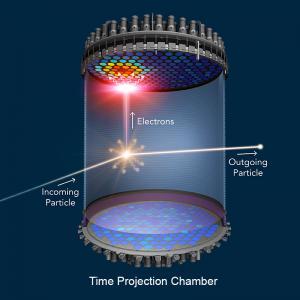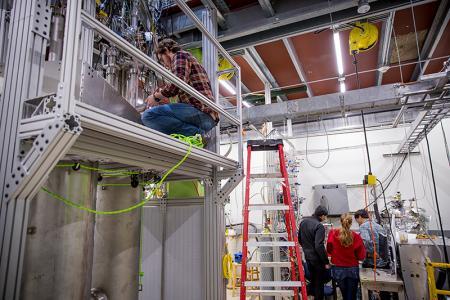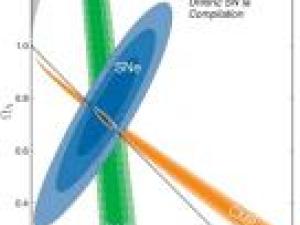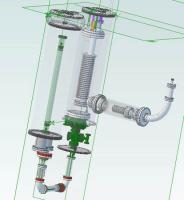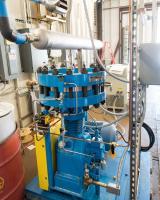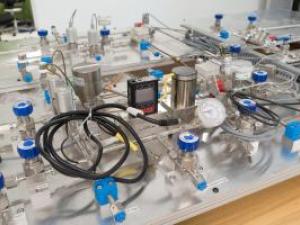LUX-ZEPLIN Research

In 1933, Fritz Zwicky’s observation and virial analysis of the Coma Cluster of galaxies led to his discovery that most of its the matter was dark. This finding launched a decades long mystery as astronomers since have reinforced his findings time and again. The now Standard Cosmology based on independent observations of clusters, the cosmic microwave background and distant type-1a supernovae converge on a consistent set of cosmological parameters, in which about 68% of the universe is dark energy, 27% is dark matter, and only 5% is ordinary matter. These numbers are consistent with direct measurements of primordial gas clouds and the Big Bang Nucleosynthesis model of the light elements, which also indicate that only 5% of the total matter-energy budget of the universe is in a familiar form. This profound discrepancy motivates the search for new forms of matter that would be the dominant form of matter in the universe.
An Inventory of the Universe
A leading hypothesis is that dark matter is composed of Weakly Interacting Massive Particles, or WIMPs. These particles may have been produced in the very early universe and survived until today. If WIMPs make up the massive dark halo binding together our own Milky Way, they could be detected by their occasional collisions with the xenon nuclei in the LUX-ZEPLIN (LZ) detector, or its LUX predecessor which we are operating now. The faint pattern of light signals WIMPs produce will distinguish them from events due to residual radioactivity or neutrino-electron scattering in the detector.

Time Projection Chamber
LZ is a liquid-xenon TPC that collects two scintillation signals for each scattering event. S1 is from the de-excitation of short-lived xenon molecules, or dimers. S2 is from electrons liberated at the event site that are extracted into the gas phase where they undergo electroluminescence. The S2 hit pattern gives the lateral position and the S2-S1 time difference gives the depth of the event. This localization allows for selection of WIMP candidates only in the detector interior, where external radioactive backgrounds do not readily penetrate.
Science Reach

LZ at SLAC National Accelerator Laboratory
The LZ group at SLAC is carrying out a broad range of hardware development, detector and background modeling, and xenon purification for the project. The laboratory recently invested in a central test platform that is being used to test LZ prototype detectors and will serve as a tool for R&D on fundamental xenon properties that will inform LZ and a potential next generation
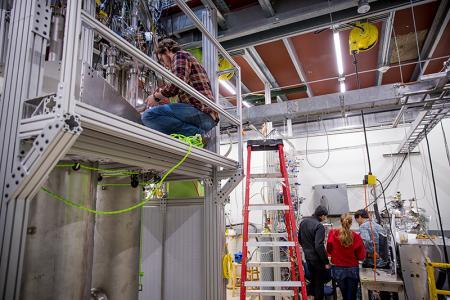
xenon dark matter experiment. The SLAC LZ group is also responsible for purifying the liquid xenon that will be used in the detector, since radio-pure xenon is needed to ensure that the experiment can see the very faint signal of a dark matter particle behind the higher rate from natural radiation sources. With LZ science projected to start in 2020, students may participate in detector design, fabrication and deployment through to initial science operations and analysis.
SLAC also plays an important role in the LZ’s predecessor, the Large Underground Xenon (LUX) experiment.
